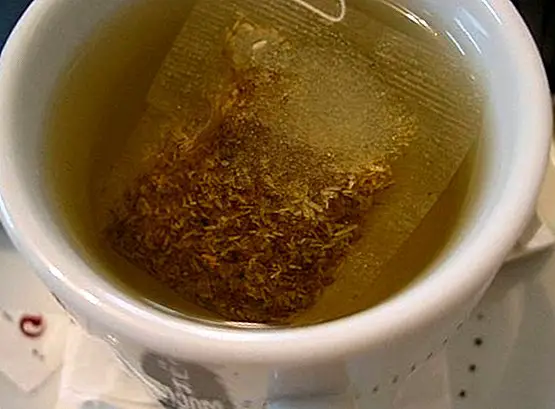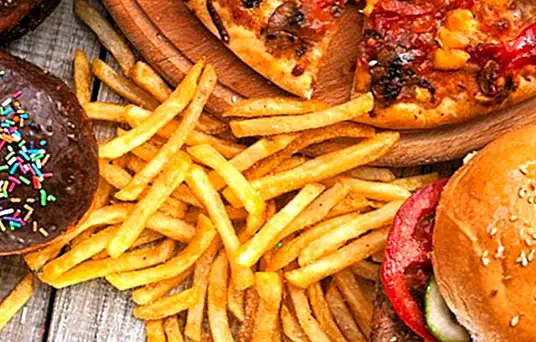Why milk does not prevent osteoporosis
The osteoporosis is a Skeletal systemic disease characterized not only by a decrease in bone mass, but also for a deterioration of the microarchitecture of the bones. That is, the bones become more fragile and therefore the risk of fractures is greater with the passage of time.
Explained in another way, osteoporosis is a disease that causes bones to weaken and break with greater ease. Thus, it is very common for people with osteoporosis to break bones of the wrist, spine and hip more frequently. 
Did you know that osteoporosis is also considered a "silent disease" ?. The reason is that the bone loss is occurring without any symptoms, so that the diagnosis of osteoporosis may not occur until a bone is broken as a result of a fall or stumble.
That is, it is an asymptomatic pathology that in fact tends to go unnoticed for many years. On the other hand, it is more frequent in women, although it is evident that men can also suffer it, especially when they are older.
In fact, when faced with a diagnosis of osteoporosis in adulthood, it is very common for the person to ask the following question: "Why do I have osteoporosis if I've been drinking milk all my life?". 
The consumption of milk, dairy and osteoporosis
Through many means of communication, commercial brands, and many other organizations related to the field of health have been promoting for years following a diet rich in dairy products helps reduce the risk of osteoporosis, or even from prevent bills when you already have this pathology.
According to a report by the EAE Business School, in Spain around 71 liters of milk are consumed per inhabitant per year. However, the Spanish Society of Rheumatology estimates that 2 million women have osteoporosis in Spain. In fact, 75 million people suffer from osteoporosis in Europe, the United States and Japan. Interestingly, most cases occur in those countries where milk consumption is higher.
Whereas, in countries such as China or India, where milk consumption is low and they follow a diet that is generally low in dairy products, bone fracture rates are many times lower compared to the United States or the Scandinavian countries.
While it is true that milk contains a very large amount of essential nutrients, among which we highlight the presence of calcium, vitamin D and phosphorus, and that the absorption of these is reinforced by the enzymatic ability to digest lactose, transforming it into D -glucose and D-galactose, it seems that its nutritional content does not provide benefits compared to the high presence of lactose, casein and other substances not so positive ...
In fact, as many scientific studies have shown, a high consumption of milk presents unwanted effects in the body, due mainly to the excessive presence of D-galactose, a type of sugar that increases oxidative stress, aging and decreased immune response, accelerating aging and shortening life.
This means that excessive consumption of dairy products influence the processes of oxidative stress and inflammation, due mainly to the high content of lactose in milk. 
For example, a few years ago Harvard University conducted a study consisting of analyzing 78,000 ill patients over a period of 12 years. It was found that those who had consumed a greater amount of calcium from dairy products significantly increased the risk of fractures, compared to those who rarely consumed milk and other dairy products.
In 2001, the National Institute of Health (University of California) published a study in the edition American Journal of Clinical Nutrition, determining that those women who obtained most of their proteins from animal sources suffered a greater bone loss, and 3.7 times more hip fractures, in comparison with those who obtained them of vegetable origin.
The problem is in milk, not in the rest of dairy
Many of us tend to consume large glasses of milk a day thinking that we do our bones well. However, there is the error: Drinking a lot of milk a day is a risk to health, increasing not only the risk of bone fractures, but of suffering an early death (especially in women).
This was concluded in 2014 by a study published in the British Medical Journal, which established that women who consume three or more glasses of milk a day have a 90% higher risk of premature death. 
To reach these conclusions, they analyzed the effects of milk consumption on a sample of 61,000 women aged 39 to 74 years (for 20 years), and of more than 45,000 men aged 45 to 79 years (for 11 years).
That is, contrary to what you think, Milk consumption daily translates into greater chances of suffering fractures. Moreover, it is alerted that the fat present in the milk cancels the positive effects of the calcium contained in this food.
However, yes there are better alternatives to milk that can be positive against osteoporosis. It is the case of yogurt or of cheese, which as this research found, are associated with lower bone fractures and lower mortality rates. The same would happen with the low-fat dairy products. This article is published for informational purposes only. You can not and should not replace the consultation with a Nutritionist. We advise you to consult your trusted Nutritionist. ThemesMilk


